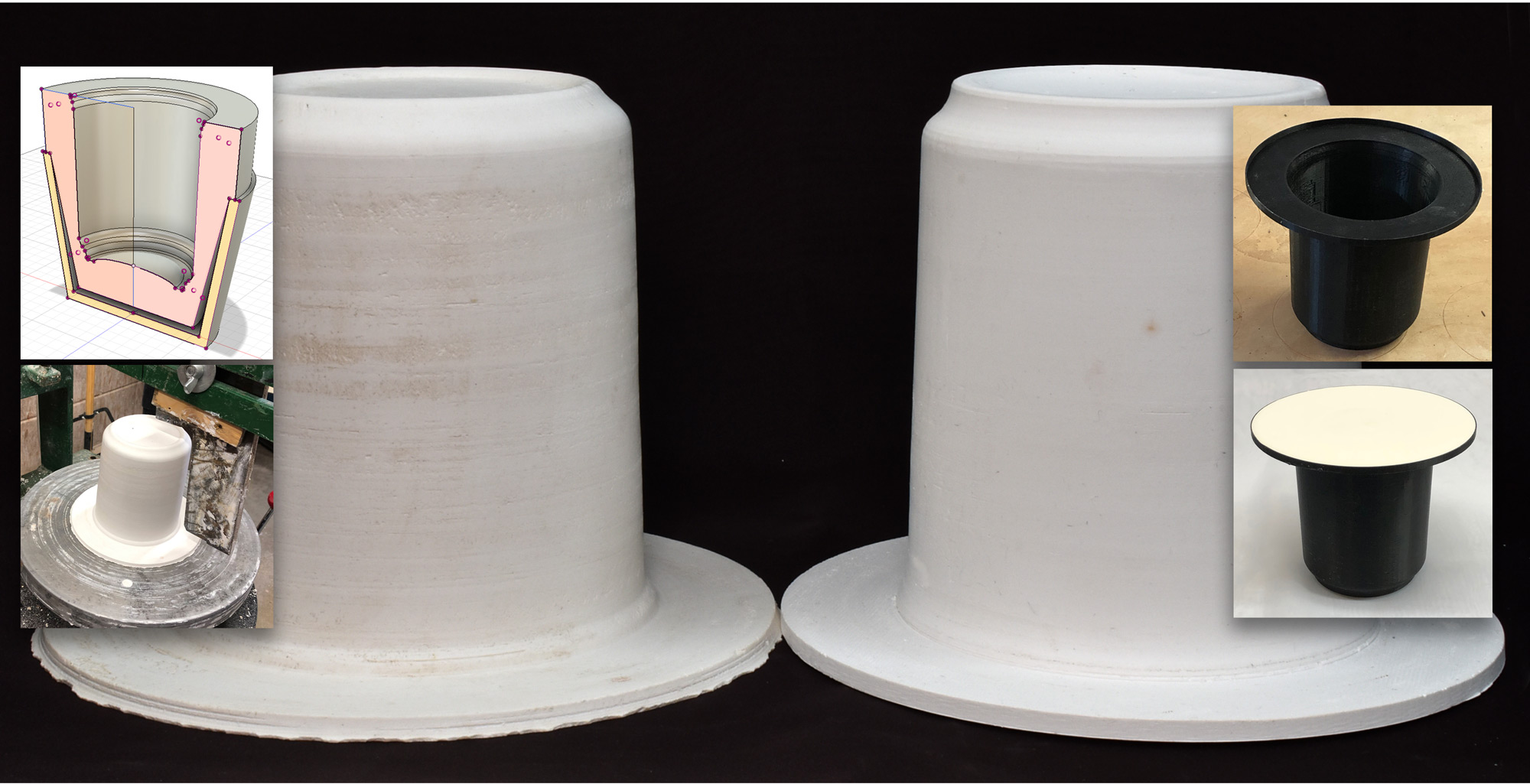Hand-tooling a mug model vs. 3D-printing a mold to cast it
I am creating molds for a 2019 casting-jiggering project to reproduce heavy stoneware mugs manufactured here 50 years ago (I am not a mold maker, just a potter). I have a profile drawing I want to match (upper left). The solid plaster model on the left was my first attempt at manual tooling. The metal template was time-consuming to hand-make, its contour was difficult to match to the drawing and the plaster surface turned out rough and difficult-to-smooth. To make the plaster model on the right I insight-live.com/glossary/267">3D printed a shell, poured the plaster in, extracted it after set and then smoothed it on the wheel using a metal rib and trimming tool. It matches the drawing perfectly and the round is very true. 3D-printing is revolutionary for this type of thing! The drawings: I hired someone on Upwork.com to make them for me (using Fusion 360). The shell-mold (to cast the model) on the upper right: I printed that too, in two pieces.
Pages that reference this post in the Digitalfire Reference Library:
Casting-Jiggering, 2019 Jiggering-Casting Project of Medalta 66 Mug

This post is one of thousands found in the Digitalfire Reference Database. Most are part of a timeline maintained by Tony Hansen. You can search that timeline on the home page of digitalfire.com.
